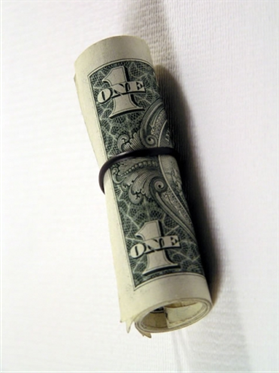Creating Money (or Jobs) Out of Thin Air
by William Chiu Today, amid foreign financial market volatility, the Federal Reserve cut the federal funds rate from 4.25% to 3.5% to prevent a recession. You may read the official press release here. The move is rare for two reasons. The Federal Reserve reduced the federal funds rate before its regularly scheduled meeting next week, and the Federal Reserve reduced the rate by 75 basis points, as opposed to its usual 25 or 50 basis point increments. In summary, today’s move is rare for its timing and magnitude.
Today, amid foreign financial market volatility, the Federal Reserve cut the federal funds rate from 4.25% to 3.5% to prevent a recession. You may read the official press release here. The move is rare for two reasons. The Federal Reserve reduced the federal funds rate before its regularly scheduled meeting next week, and the Federal Reserve reduced the rate by 75 basis points, as opposed to its usual 25 or 50 basis point increments. In summary, today’s move is rare for its timing and magnitude.The federal funds rate, or the interest rate that U.S. banks charge each other for overnight loans, is the benchmark rate for many short-term and long-term interest rates in the United States. A reduction in the federal funds rate, often times (though not always), decreases the interest rate on credit cards, automobile loans, and mortgages. Lower interest rates encourage consumers to spend and businesses to build new offices and purchase computers, machinery, and software. A boost in consumption (e.g. buying new clothes) and investment (e.g. building new offices) spending are exactly what the economy needs when it is slipping into a recession caused by sudden drops in overall spending. Though the U.S. economy is NOT officially in a recession, the Federal Reserve forecasts “slowed growth” and would like to cut rates just-in-case.
The previous explanation shows how the Federal Reserve could use monetary policy to minimize the depth and length of a recession. However, what is less well known is the process with which the Federal Reserve is able to manipulate the federal funds rate. Essentially, the Federal Reserve lowers the federal funds rate by expanding the money supply. This is easier said than done.
First and foremost, the Federal Reserve does NOT print new dollar bills. So how is it able to create new money? There are two main forms of money—cash in circulation and checking deposits held in banks. Separate from the money supply are “reserve accounts” that commercial banks are required to have at the Federal Reserve. These reserve accounts hold cash for the commercial banks in case depositors cash-out some of their deposits.
The Federal Reserve can expand the money supply by expanding the amount of deposits held in the U.S. commercial banking system. One way to do so is to purchase U.S. government bonds issued by the U.S. Treasury department. When the Federal Reserve purchases government bonds from commercial banks, it takes bonds out of circulation and electronically credits reserve accounts. U.S. commercial banks armed with more cash reserves will issue new loans which are then deposited back into the banking system. This method effectively increases the dollar amount of checking deposits in the economy, and hence, expands the money supply.
Discussion Questions
1. Suppose U.S. commercial banks are highly reluctant to issue new loans even if they are armed with more reserves. How would this impact the Federal Reserve’s ability to expand the money supply and lower the federal funds rate?
2. Republican presidential candidate, Ron Paul, believes that the Federal Reserve “debases and depreciates” the currency through its manipulation of the money supply. In fact, he wants to abolish the Federal Reserve altogether. Using the definition of the money supply and the relationship between interest rates and unemployment, how could the money supply be “pro-cyclical” without the Federal Reserve?
Labels: Global Economic Watch, Interest Rate, Macroeconomics, Monetary Policy



0 Comments:
Post a Comment
<< Home